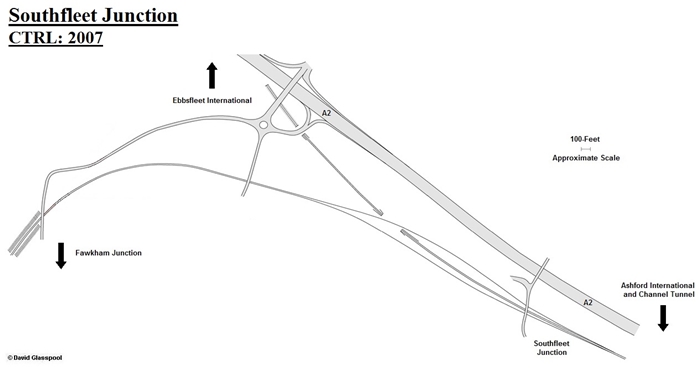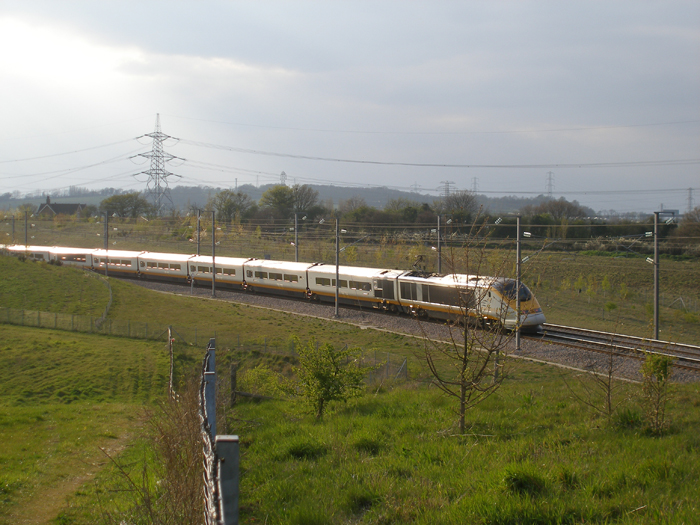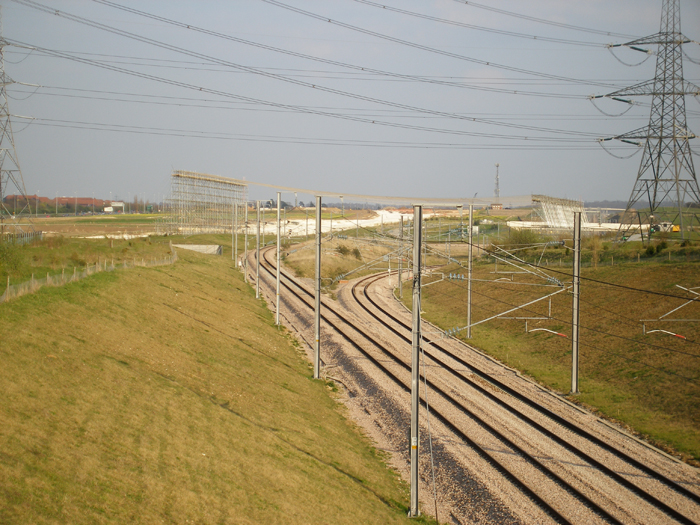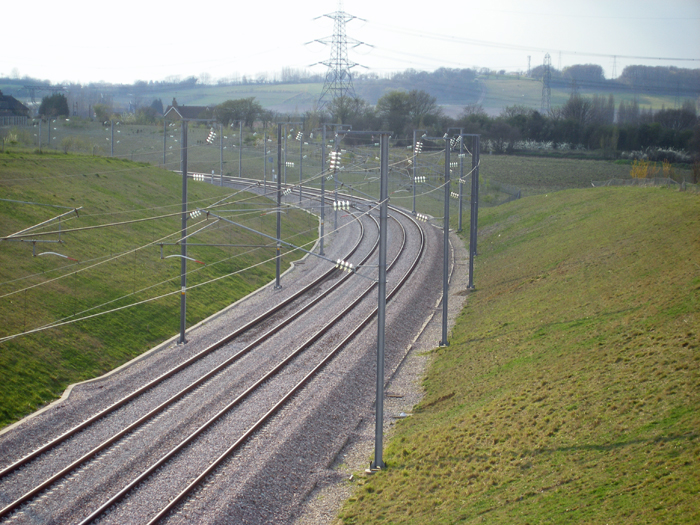
Waterloo had been the hub of international services since these commenced to Paris and Brussels on 14th November 1994. The primary route of "Eurostar" trains was via Bromley South, Bickely and Orpington Junctions; thence to Sevenoaks, Tonbridge, Ashford, and Cheriton (Folkestone). This was complemented by an alternative course via Swanley and Bat & Ball, rejoining the main line at Sevenoaks, and another route via Maidstone East which was accessed at Otford Junction. Finally, the Catford Loop, between Nunhead and Shortlands, was also cleared for "Eurostar" operation. A direct connection between Waterloo and this network of lines had been afforded by the commissioning of the Nine Elms Flyover.
In 1987, the final mile of the Gravesend West branch started to be redeveloped in connection with a new retail/industrial park complex and associated road network. The rest remained under vegetation and, as part of the CTRL project, about 2¼-miles of track bed from the former site of Fawkham Junction to Southfleet was selected to be re-used for a railway. It had been decided that until Section 2 of the CTRL was opened to traffic, an interim connection between the existing "Eurostar" terminus at Waterloo International and Section 1 was required. This would take international trains 5-miles beyond their existing limit of operation on the "Chatham" main line - Swanley Junction - to Fawkham Junction, and in doing so accelerate London to Paris journey times from 3 hours to 2 hours 35 minutes. Civil engineering works on the Fawkham Junction to Southfleet Junction line, which became known as the "Waterloo Connection", officially commenced on 5th October 1998.
At this time, the former station site at Southfleet was completely overgrown, its buildings demolished, but a road bridge still existed across the railway cutting, as did a "high level" Station Master’s house. At this location, the Waterloo Connection would deviate from the original course of the Gravesend West branch, taking a sharp right turn to assume a south easterly heading. Significant earthworks were required to form a curved cutting at Southfleet, enabling the Waterloo Connection to join Section 1 of the CTRL. The excavated soil was dumped in the vacant railway cutting of 1886, below the Station Master's house and under the road bridge.
The Waterloo Connection came into use on 28th September 2003, when "Section 1" of the CTRL opened to regular traffic, replacing the existing main line via Tonbridge as the primary route for international passenger trains. This remained the case until 14th November 2007: on this day, "Section 2" of the CTRL, which was rebranded "High Speed 1" (HS1), was opened to regular traffic, reducing London to Paris journey times to 2 hours 15 minutes. Consequently, both Waterloo International and the Waterloo Connection ceased to be used for international passenger traffic. After a brief episode of hosting a weekly empty stock "Javelin" working and, in 2014, a couple of rail tours, the Waterloo Connection was decommissioned to through traffic, Fawkham Junction being clipped and padlocked. In 2016, the spur became host to withdrawn Class 373 units, which had been made redundant by the introduction of the Class 374 fleet.

Diagram showing the "flying junction" arrangement at Southfleet. Click the above for a larger version. © David Glasspool

The roof of the former Southfleet Station Master's house can be seen in the left background, as the rear of a London-bound Class 373 formation is observed on the curve from Section 1 of the CTRL. © David Glasspool

This eastward view, beyond the curve seen in the previous photograph, shows the double-track of the Waterloo Connection diverging to form the "flying junction" link with the CTRL. A netting, supported on either side by scaffolding, had also appeared over the lines, which was to allow the renewal of the above National Grid power cables. © David Glasspool

Looking in the opposite direction to the previous photograph, the Waterloo Connection is seen making a sharp turn south, to rejoin the original course of the Gravesend West branch for the run to Fawkham Junction. © David Glasspool
Return to the Kent Rail Homepage or alternatively, check for Updates.
Website & Copyright information - Links - Contact the Webmaster